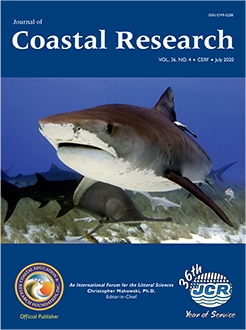Srineash, V.K.; Kamath, A.; Murali, K., and Bihs, H., 2020. Numerical simulation of wave interaction with submerged porous structures and application for coastal resilience. Journal of Coastal Research, 36(4), 752–770. Coconut Creek (Florida), ISSN 0749-0208.
The study of wave interaction with porous structures is essential as coastal structures are often porous in nature because of their prominent energy dissipation characteristics. The present work is focused on the numerical modeling of wave interaction with submerged porous structures, which are often classified as reef breakwaters and low-crested structures. Numerical modeling of wave interaction with porous structures is considered to be a challenge for researchers because of the complexities associated with it. The present study numerically investigates the wave interaction process through the porous media by representing the porous media using Volume-averaged Reynolds-Averaged Navier–Stokes (VRANS) equations. For the study, an open-source RANS-based computational fluid dynamics tool, REEF3D, has been used for numerical modeling. The study also consists of experiments that are used for validating the numerical model. The numerical results for the free-surface elevation and the hydrodynamic pressure are compared with the experimental measurements and found to be in good agreement. The numerical study is extended to different crest widths of the structure and varying wave parameters to investigate the effects of various dimensionless parameters affecting wave transmission. The frequency-domain analysis is performed to investigate the energy distribution of the incident and transmitted waves. Finally, the utility of the numerical model adopting VRANS equations has been demonstrated for climate-change mitigation studies. This has been carried out by studying the effects of pressure reduction on a vertical seawall due to the presence of a porous reef breakwater in the sea side. Pressure reduction up to 32% is calculated because of the presence of the porous structure in front of the seawall and this demonstrates the application of reef breakwaters for coastal resilience studies. Such investigations are useful in protecting the existing coastal structures prone to severe wave conditions exceeding the design limits.





